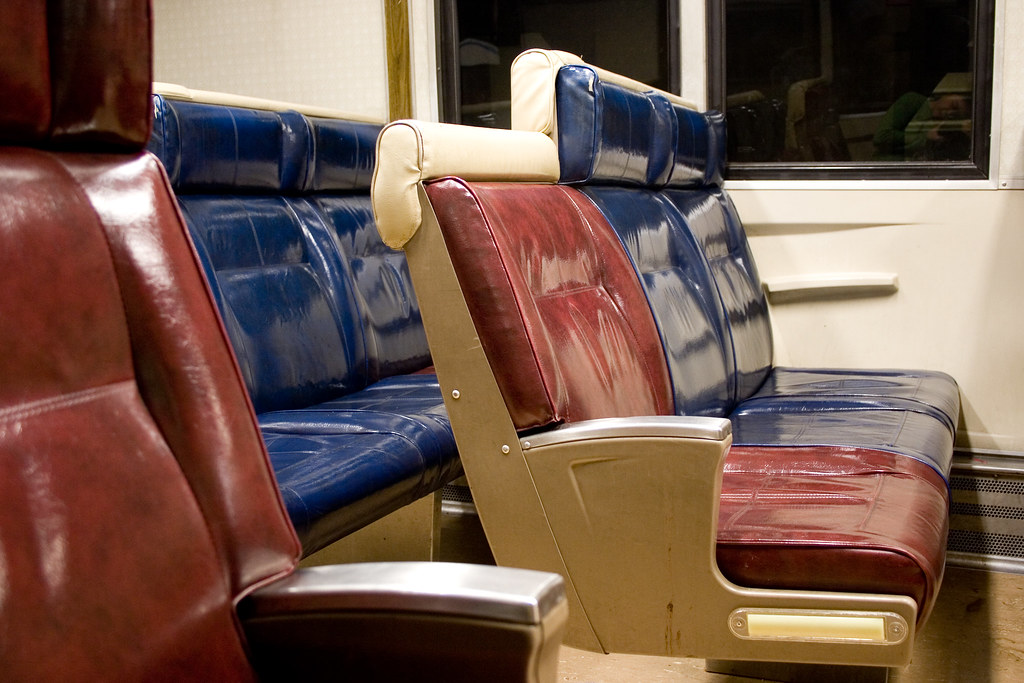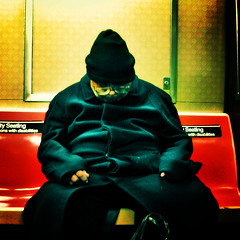 After months of political threats and public outrage, the MTA and New York State have tentatively come to terms on a deal that will save the free Student MetroCard program, numerous sources say this evening. According to reports, the state will kick in just $25 million and provide the MTA with a few more incentives — including a higher cap on borrowing and a watered down bus lane enforcement measure — while the city will maintain its $45 million contribution. The deal comes just six days before the MTA Board was set to vote on a plan to phase out the free rides. Instead, the MTA will cash in its biggest political chit while getting too little in return.
After months of political threats and public outrage, the MTA and New York State have tentatively come to terms on a deal that will save the free Student MetroCard program, numerous sources say this evening. According to reports, the state will kick in just $25 million and provide the MTA with a few more incentives — including a higher cap on borrowing and a watered down bus lane enforcement measure — while the city will maintain its $45 million contribution. The deal comes just six days before the MTA Board was set to vote on a plan to phase out the free rides. Instead, the MTA will cash in its biggest political chit while getting too little in return.
News of the deal first broke late this evening when the Daily News spoke with the legislatures involved. At the time, those in Albany hesitated to confirm the details. “There’s no deal, but we’re getting close,” Richard Brodsky said. He later told NBC New York that the two sides were trying to agree on a dollar figure and “some other things the MTA says it wants.”
Shortly after midnight this morning, however, the MTA released a statement proclaiming that the Student MetroCards had been saved. To fund the student cards, the city and state will pay the MTA a combined $70 million. One year ago, before the state unilaterally cut its contributions, the MTA could count on $90 million from Albany and City Hall — the same amount it took in when the program first started in 1996. The MTA had maintained that the cost of providing free rides along with the revenue opportunities lost by not charging students amounted to well over $200 million, but with the state suffering through its own financial crisis, the MTA will have to pick up the difference for now.
Said the Authority in a statement:
The MTA believes that school children should not have to pay to travel to school,” the authority’s statement said, “but that funding this transportation is the responsibility of the State and City, as it is throughout the state…
While we had hoped that the State and City would pay the total cost of this program, we recognize the very difficult financial environment for not only the State and City, but for the hundreds of thousands of families in New York City who frankly could not afford to pay the added cost of transit fares for school transportation. We heard loud and clear at our public hearings, in meetings with student leaders and in protests around the city, that charging students would have a life-changing impact on the ability of New Yorkers to receive a quality education.
In light of these unbearable impacts, the MTA has decided to abandon the proposal to charge students for travel to and from school. As a result, the budget deficit that we are facing will increase, but the alternative is worse. Further actions needed to close this gap will be addressed when our preliminary financial plan is released in July.
What the MTA wanted though it won’t get. The MTA wanted a fully-funded program. The MTA wants a fully-funded capital plan, a source of revenue to avert service cuts and the same commitment to transit that Albany is willing to give to the state’s roads. Instead, the MTA will get less money from the state for Student MetroCards in 2010 than it did from 1996-2008.
Meanwhile, in Albany, the politicians continue to miss the point. Brodsky bashed the MTA for “using” students as a political pawn, one of the few options actually available to the beleaguered authority. “These kids should never have been used as a pawn in a larger dispute about MTA funding,” he said to The Times. He later qualified that statement and recognized that the MTA is in a dire financial situation as well. “The MTA needs and deserves more money, but using the students as a bargaining chip,” he said, “was never a good idea.”
In actuality, using the Student MetroCards was a great idea. What Albany or City Hall has never addressed is the why of it. Why should the MTA pay for the city and state to lean on the subways as a glorified free school bus without paying for the costs of it? The MTA should not be a pawn of the sagging public education system; it is a transit agency. Running trains frequently and on time should be more of a priority than free travel for 585,000 students. If the city and state will pay, the program should survive; if not, the MTA should cut it. It shouldn’t let the state short-charge them in exchange for meager political promises.
So where does this tentative deal leave the MTA? On the plus side, the authority will be allowed to use cameras to guard the new bus lanes. The latest measure, however, is a half-hearted excuse for true enforcement, and it covers only 50 miles of bus lanes. Financially, the authority will be permitted to up its borrowing level. This financial flexibility may help it cover some capital costs in the short term, but with $2 billion in debt service currently due, the MTA is learning first hand how harmful short-term borrowing can be to the bottom line. The students don’t have to pay this year, but the rest of us will foot the bill in the future as it comes due.
Finally, the kicker: Albany doesn’t expect the MTA to keep the Student MetroCards free for more than just another year. Since the MTA evaluates its budget on a year-to-year basis, it can threaten to revoke the program all over again in 2011, and it makes little financial sense for the authority to provide free rides. As Brodsky said to NBC, “All [the MTA] can guarantee legally is a year. I think you’re going to see them take the whole thing off the table. The MTA needs more help than we’re giving them.”
Keeping an even keel about her, Neysa Pranger of the Regional Plan Association called this deal “good news for students” and “questionable news for riders and the fares.” That it is. That it is indeed.






 While Cablevision and
While Cablevision and 

